By Walter Sorochan
Posted January 20, 2011; updated November 11, 2021. Disclaimer The information presented here is for informative and educational purposes only and is not intended as curative or prescriptive advice.
Purpose of article
The world, in 2011, is experiencing shortages of food; resulting in higher food prices. Food shortages are expected to trigger food wars, riots, starvation and food related illnesses. This threat of food shortages has spurred interest in growing food at the local level.
One way to deal with anticipated food shortages and expensive food is to grow food where people live. This article documents and collates information about growing food locally.
Introduction
The world food system, especially United States, has changed substantially over the last fifty years. This is in part due to more than 50% of the world’s population now living in cities, and the numbers are growing. Article by UCLA: Sustainability is mo longer active.
How and where we grow food has also changed in the past 100 years. For example, in 1870, 100% of the apples consumed in Iowa were produced in Iowa. By 1999, Iowa farmers grew only 15% of the apples consumed in the state. Article by Hill: Food miles is no longer active.
Another example of how our food system has changed: Despite being the nation’s largest food producer, California currently imports more than half of its food. According to the International Society for Ecology and Culture, 43% of California’s raw farm tonnage is exported, and 59% of our state’s demand for raw farm products is brought in from elsewhere. Ironically, California imports many of the same agricultural products that it also produces for export, resulting in duplicative trade and wasteful use of resources. Article by Blythman: Cost of food miles is no longer active.
Another reason for a food system change is due to a global economy, where the food industry has centralized and the food supply has become concentrated in the hands of fewer, larger suppliers. For example: over 80% of the beef packing market is controlled by 4 firms; 4 firms control 80% of soybean processing and the top five food retailers sell 42% of America’s food (in 1997 it was only 27%). Article by Univ Michigan Fact sheet is no longer active. NSAIS: local foods Article by Tabb: global food crisis is no longer active.
Centralizing the food supply has resulted in making food available the year round in rich countries like Canada, United States and Europe. Food, like avocados from South America, apples from New Zealand, cherries, lettuce and broccoli from Chile are all flown at an increased price during the winter months. Article by Ecoshock: growing insane is no longer actice. However, the bad side of such a food supply system is that it has caused a great disparity in the food supply available to the poor and rich countries of the world.
For example: The average disposable income spent on food, beverages, and tobacco ranges from 17% in high-income countries to 53% in low-income countries. On average, Americans spend less than 10%, while Nigerians spend 73%. Article by Univ Michigan: Social Development is no longer active. The point being made here is that people in rich countries can afford to buy foods imported from outside of regional, state and even national boundaries at consistent products at low prices, while people in poor countries simply do not have money to buy expensive food from outside their countries. Consequently, people in poor countries face starvation and death while people in America face lower nutritional quality and higher food prices.
Food crisis ... Everything peaking at same time Chaos:
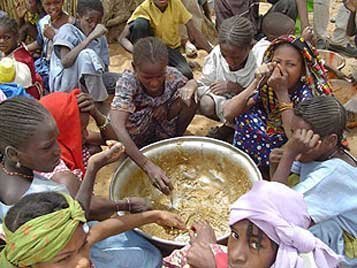 There is an astounding lack of awareness and understanding that the world
appears to be reaching peak water,
oil, economic and food crises .... all occurring at the same time. Article by Tabb: global food crisis is no longer active. There
is a real threat of devaluation of US monetary purchasing standard occurring at more or less the same time that food,
water and oil shortages
are occurring. That these crises are happening at the same time throughout
the world is an event
unprecedented in the history of the world. This situation poses an imminent threat to food security
and political stability: Brown: Food bubble collapse
Article by Univ Michigan: Social Development is no longer active.
There is an astounding lack of awareness and understanding that the world
appears to be reaching peak water,
oil, economic and food crises .... all occurring at the same time. Article by Tabb: global food crisis is no longer active. There
is a real threat of devaluation of US monetary purchasing standard occurring at more or less the same time that food,
water and oil shortages
are occurring. That these crises are happening at the same time throughout
the world is an event
unprecedented in the history of the world. This situation poses an imminent threat to food security
and political stability: Brown: Food bubble collapse
Article by Univ Michigan: Social Development is no longer active.
- Today more than half of the world’s people live in countries with food bubbles. Brown: Food bubble collapse
- Estimates are that between 1 and 2 Billion people in the world are now starving or malnourished. Article by Dreamer: world facts is no longer active.
- 40 percent of the world — more than 2 billion people — have no access to clean water or sanitation. Article by Dreamer: world facts is no longer active.
- If however, the oil peak is real and the world has not switched to an alternative form of fuel before this time, peak oil could possibly trigger a global recession, food shortages and conflict between nations over dwindling oil supplies. Article by Dreamer: world facts is no longer active. Rising food prices: Between early 2007 and 2008, world wheat, rice, corn, and soybean prices climbed to roughly triple their historical levels. Brown: Food bubble collapse
This peaking of crises all at the same time triggers the need to think about surviving in a futuristic world of consumer shortages and possible chaos. One way to survive is to ensure a steady supply of food by growing food locally.
Food bubble about to burst: Food Riots January 17, 2011:
There are food riots going on around the world. People are burning stores in India, Chili, China, Egypt, Tunisia and Algeria.
People will put up with a lot — corruption, nepotism, cruel laws, and barbaric prisons — but they tend to lose it when they can’t afford food. This is especially true when they blame the ruling class for their misery.
Food riots in the past have ended reigns in France, Russia, and British India. Today [ 01/17/2011] the Egyptian stock market sold off on fears the riots might spread. DeHaemer: food riots 2011
Lester Brown, an agricultural policy expert and founder of the Washington- based Earth Policy Institute, warnsthis week, in both his book and a new article in Foreign Policy, that the "food bubble" may be about to burst; laying out why there is good reason to believe that the new year, 2011, may be disastrous on this front. Brown: Food bubble collapse Consider Brown's comments below:
"But whereas in years past, it's been weather that has caused a spike in commodities prices, now it's trends on both sides of the food supply/demand equation that are driving up prices. On the demand side, the culprits are population growth, rising affluence, and the use of grain to fuel cars. On the supply side: soil erosion, aquifer depletion, the loss of cropland to nonfarm uses, the diversion of irrigation water to cities, the plateauing of crop yields in agriculturally advanced countries, and .... due to climate change — crop-withering heat waves and melting mountain glaciers and ice sheets. These climate-related trends seem destined to take a far greater toll in the future.
Already, there are reasons to be concerned: food riots in Algeria, soaring wheat prices in the United Kingdom, an 18 percent inflation rate on food prices in India, and the Mexican government trying desperately to fend off rising corn prices in order to prevent a recurrence of the so-called "tortilla riots" of 2007, among others.
Last week, the United Nations Food and Agricultural Organization reported that food prices hit an all-time high in December—higher than even the spike between 2007 and 2008, a rise that caused a global food crisis. There are many reasons for the spike, and unfortunately, two of the major ones aren't getting better any time soon. The first is population: We gain 219,000 fellow humans every year. Sometime in late 2011, we will number 7 billion as a global population. (See our population special for more.) The rate of population growth has slowed, but we're pretty much guaranteed to keep expanding.
The second reason is equally intractable: Many of the current environmental factors driving constraints on food resources, including heat waves, drought, and severe weather, are only going to get worse as the climate changes. This is on top of the water resource depletion and soil erosion that were already underway. And unlike previous rises in food prices, there is probably no turning back from this one. "We can no longer expect that things will soon return to normal, because in a world with a rapidly changing climate system there is no norm to return to."
Rising food prices serve as a powerful reminder that we humans are inextricably linked to our environment, and when it suffers, we suffer. It's also a reminder that development and environment issues cannot and should not be treated as separate from food. As Gawain Kripke, policy director for Oxfam America noted last week, unless we address both the underlying issues of both climate and development, "we will find ourselves perpetually on the knife's edge of disaster." Sheppard: food bubble bursting
Today's Food System in USA, Canada and the World:

Article by Univ Michigan Food system Fact sheet is no longer active.
Our food system is particularly energy-intensive and vulnerable to fluctuations in energy prices. These energy prices are not included in the real cost of food.
North Americans enjoy a diverse abundance of cheap food – spending a mere 9.8% of disposable income on food. However, store prices do not reveal the external costs – economic, social, and environmental – that impact the sustainability of the food system. Considering the full life cycle of the U.S. food system (graphic above) illuminates the connection between consumption behaviors and production practices. Article by Univ Michigan Food system Fact sheet is no longer active.
Speculation on Wall Street: Another overlooked aspect of the cost of food is Wall Street speculation on the food supply. Speculators are gambling on the future cost of food, thereby indirectly also causing a food shortage in the world.
Until deregulation, the price for food was set by the forces of supply and demand for food itself. [ This was already deeply imperfect: it left a billion people hungry. ] But after deregulation, it was no longer just a market in food. It became, at the same time, a market in food contracts based on theoretical future crops – and the speculators are driving the price through the roof. Hari: Stock Market impact on Food prices Eli Brown: SPECULATING IN HUNGER
Hidden costs: But the biggest affect on cost of food is the hidden and covered up cost of food production and distribution. According to Lester Brown, our market-based economy is not telling the truth about the real costs of fossil fuels supporting the growth of food.
|
"We have set up a global food system that supports speculation. And with [such] markets, we can't get speculators out of the food business," said Lester Brown, an agricultural policy expert and founder of the Washington- based Earth Policy Institute. "Farmland is better gold than gold for speculators," Brown told IPS. Article by Leahy: Farmland Is the New Gold is no longer active. "Our market-based global economy as currently managed is in trouble. The market does many things well. It allocates resources with an efficiency that no central planner could even imagine, much less achieve. But as the world economy expanded some 20-fold over the last century it has revealed a flaw— a flaw so serious that if it is not corrected it will spell the end of civilization as we know it. The market, which sets prices, is not telling us the truth. It is omitting indirect costs that in some cases now dwarf direct costs. Consider gasoline. Pumping oil, refining it into gasoline, and delivering the gas to U.S. service stations may cost, say, $3 per gallon. The indirect costs, including climate change, treatment of respiratory illnesses, oil spills, and the U.S. military presence in the Middle East to ensure access to the oil, total $12 per gallon. Similar calculations can be done for coal. We delude ourselves with our accounting system. Leaving such huge costs off the books is a formula for bankruptcy. Environmental trends are the lead indicators telling us what lies ahead for the economy and ultimately for society itself. Falling water tables today signal rising food prices tomorrow. Shrinking polar ice sheets are a prelude to falling coastal real estate values. Beyond this, mainstream economics pays little attention to the sustainable yield thresholds of the earth’s natural systems. Modern economic thinking and policymaking have created an economy that is so out of sync with the ecosystem on which it depends that it is approaching collapse. " Brown: Food bubble collapse |
Hidden energy use within the food system.
The graph below projects the cost of energy used to provide food.
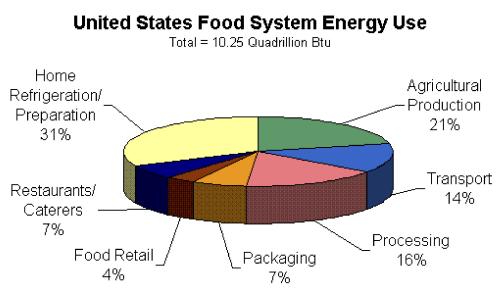
Source: Heller and Keoleian. Life Cycle-Based
Sustainability Indicators for Assessment of the U.S. Food System. 2000.
Article by Univ Michigan Fact shee is no longer active.
Article by Blythman: Cost of food miles is no longer active.
While studies vary, a typical estimate is that the food industry accounts for 10% of all fossil fuel use in the United States. Of all the energy consumed by the food system, only about 20% goes toward production; the remaining 80% is associated with processing, transportation, home refrigeration and preparation. Article by Hill: Food miles is no longer active.
The energy consumed in a system is often a useful indicator of its sustainability. Modern agriculture and the food system as a whole have developed a strong dependence on fossil energy. We generate much of our electricity for refrigeration from fossil fuels.
In many ways oil powers the world. It powers our transportation systems and our commodity distribution systems. If the price of oil goes up, the price of EVERYTHING, including food, goes up. A realistic way to fight the impact of fossil fuels on the cost of food is to grow food locally; thereby lowering the transportation and refrigeration costs.
Food miles:
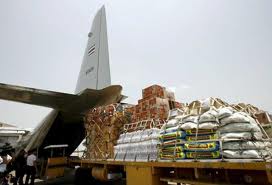
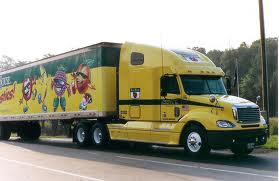 It has been shown that local food systems do reduce food miles, which in turn
tend to reduce energy consumption; but there are exceptions. But ... it also depends on the kind of local transportation used.
Air freight emits more greenhouse gases per food mile than any other mode of transport. Big trucks are second in emitting greenhouse gases and emit more
pollution than smaller trucks. The table below compares the distance cost of locally grown foods to imported foods.
It has been shown that local food systems do reduce food miles, which in turn
tend to reduce energy consumption; but there are exceptions. But ... it also depends on the kind of local transportation used.
Air freight emits more greenhouse gases per food mile than any other mode of transport. Big trucks are second in emitting greenhouse gases and emit more
pollution than smaller trucks. The table below compares the distance cost of locally grown foods to imported foods.
Food mile distances for local versus conventional produce
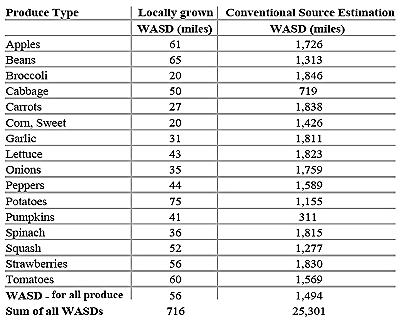
Source: Leopold Center for Sustainable Agriculture. Article by Hill: Food miles is no longer active.
Weighted Average Source Distance = WTSD
Food sold in U.S. supermarkets averages some 1,500 miles from farm to plate--a 25% increase from 1980, according to Worldwatch Institute, a Washington nonprofit. Smith: 100-mile diet Article by Hill: Food miles is no longer active. Article by Blythman: Cost of food miles is no longer active.
What is localized agriculture? A new trend in the global food supply is decentralizing how we grow food and how we plan cities. Cities are planting surrounding streets and open landscapes "green;" thereby making cities more habitable and sustainable. Growing food locally [ localized agriculture ] has many advantages over food grown "air miles away" in a distant country. Local food reduces the number of "food miles" between farm and plate, and helps to keep agricultural profits in the local economy.
This means that farms and farmers grow their food locally and also sell their produce and food in the areas in which food is grown within their region. Localizing agriculture helps local economies improve by keeping the money local, buying local produce from farmers in your area and creating jobs locally. Localizing cuts down on the transportation, refrigeration and storage costs of shipping food around the country.
Localization of Food Growing Trends:
Growing food in your local community includes all of the following trends that sustain food availability for people during good and bad times:
Buying local food:
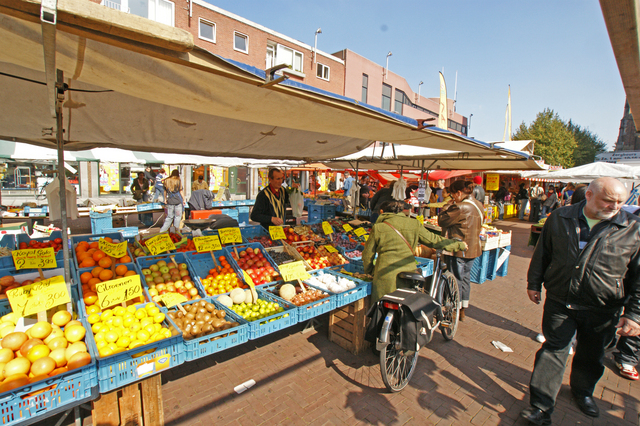
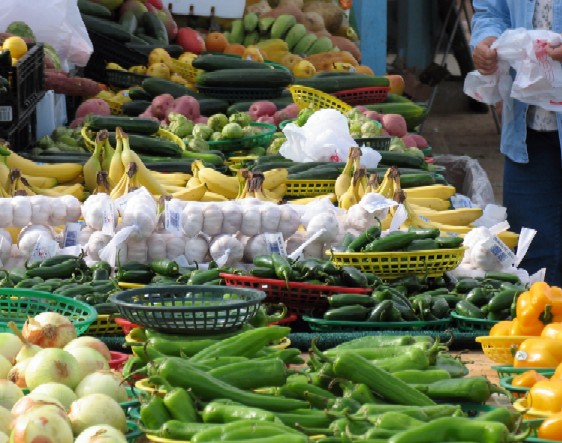
Many schools and universities are now making a point of buying local food because it is fresher, tastier, more nutrient-rich and it fits into new campus greening programs. Supermarkets are increasingly contracting seasonally with local farmers when produce is available. For example, in late 2010 Walmart announced a plan to buy more produce from local farmers for its stores. Some year-round food markets are evolving a supply of only locally produced foods, including not only fresh produce but also meat, milk, cheese, eggs, and other farm products.
Upscale restaurants emphasize locally grown food on their menus. Jaffe: profitable roof gardens Article by Mohn: Hotel roof gardens is no longer active.
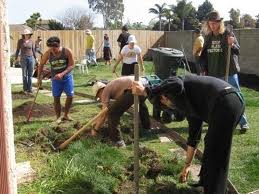 Home gardening [ back yard ] was given a big boost in the spring of
2009 when First Lady Michelle Obama worked with children from a local school to dig up a piece of the White House lawn to start a vegetable garden. There was a
precedent for this: Eleanor Roosevelt planted a White House victory garden during World War II. Her initiative encouraged millions of victory gardens, which eventually grew 40 percent of the nation’s fresh produce.
Home gardening [ back yard ] was given a big boost in the spring of
2009 when First Lady Michelle Obama worked with children from a local school to dig up a piece of the White House lawn to start a vegetable garden. There was a
precedent for this: Eleanor Roosevelt planted a White House victory garden during World War II. Her initiative encouraged millions of victory gardens, which eventually grew 40 percent of the nation’s fresh produce.
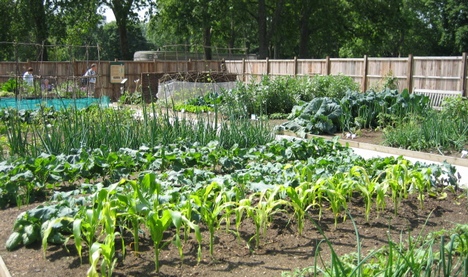 Victory [ home ] Gardens: Example San Francisco, Ca..2008 is a program of Garden for the Environment and the City of San Francisco's Department for the Environment. A two-year pilot project to support the transition of backyard, front yard, window boxes, rooftops and unused land into organic food production areas, Victory Gardens 2008+ derives its title from, and build on, the successful nationwide Victory Garden programs of WWI and WWII.
"Victory" is growing food at home for increased local food security and reducing the food miles associated with the average American meal.
Article by San Francisco victory gardens is no longer active.
Victory [ home ] Gardens: Example San Francisco, Ca..2008 is a program of Garden for the Environment and the City of San Francisco's Department for the Environment. A two-year pilot project to support the transition of backyard, front yard, window boxes, rooftops and unused land into organic food production areas, Victory Gardens 2008+ derives its title from, and build on, the successful nationwide Victory Garden programs of WWI and WWII.
"Victory" is growing food at home for increased local food security and reducing the food miles associated with the average American meal.
Article by San Francisco victory gardens is no longer active.
Many cities now have home garden projects like the one in San Diego, California. Article by Sterman: homegrown San Diego is no longer active.
Community Gardens: Many cities and small towns in Canada, United States and England are creating community gardens that can be used by those who would otherwise not have access to land for gardening. Providing space for community gardens is now seen by many local governments as an essential service, like providing playgrounds or parks.
School gardens are another welcome development.
|
|
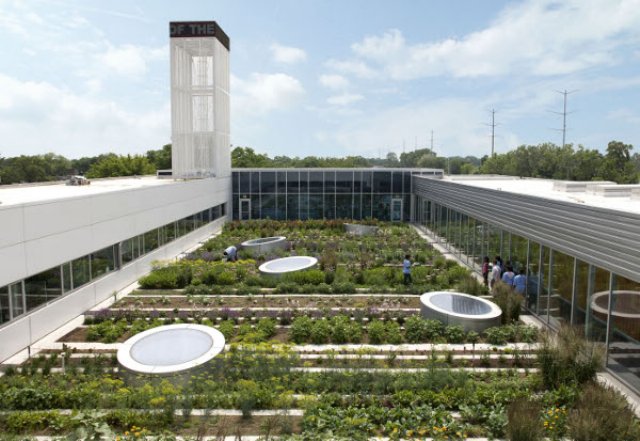 Illustration on right is an example of an innovative urban garden on the roof top of a school
in Manhattan, NY.
Illustration on right is an example of an innovative urban garden on the roof top of a school
in Manhattan, NY.
Illustration on left is a school garden in a Chicago school.
Market Gardening: Market gardening is the commercial production of vegetables, fruits, flowers and other plants on a scale larger than a home garden [ one to two acres ], yet small enough that many of the principles of gardening are applicable. The goal, as with all farm enterprises, is to run the operation as a business and to make a profit. Market gardening is often oriented toward local markets Article by Bachmann: Market Gardening is no longer active.
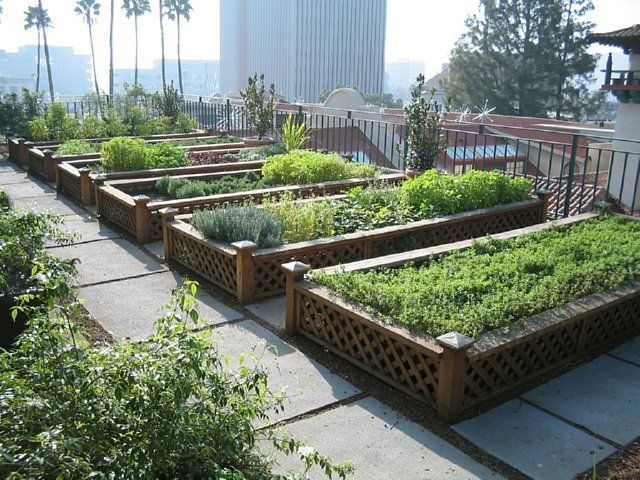
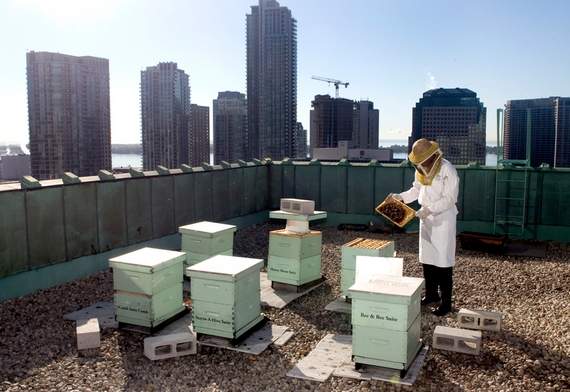 Roof Top Gardens: High rise buildings the world over are building roof top gardens as a way to grow food locally and to also provide energy savings.
Roof Top Gardens: High rise buildings the world over are building roof top gardens as a way to grow food locally and to also provide energy savings.
Hotels are going local, establishing partnerships with area farmers and growing food in rooftop gardens. They are catering to travelers seeking to eat healthily on the road. Article by Mohn: Hotel roof gardens is no longer active.
Sustainable City Movements:
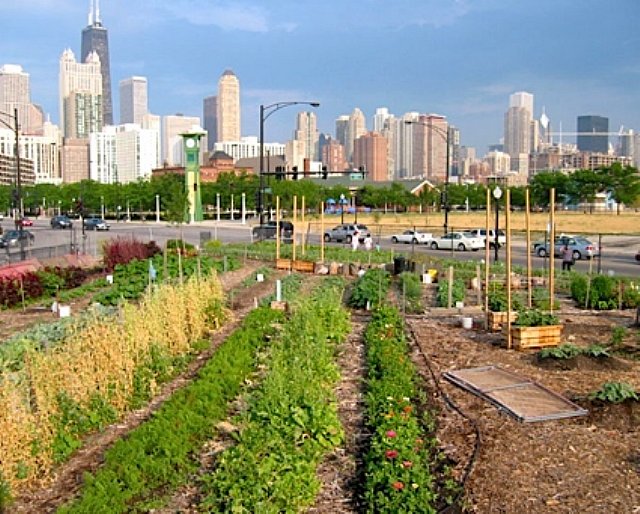 Urban gardens are gaining popularity throughout the world.
Urban gardens are gaining popularity throughout the world.
Many cities are passing ordinances that support local food production and discouraging importing of foods from far away places. Canadian cities have started the movement to local food production. Eight cities in Ontario have set strict limits on how far food can travel, before appearing in a "Farmer's Market". Gone are the long-haul truckers pretending to be local farmers. The big city of Toronto, and surrounding cities, are looking at their "food-shed" and how to encourage local growers. Article by Ecoshock: growing insane is no longer actice.
Anne Arbor, Detroit, and Flint Michigan are also doing winter farming, Elliot Coleman, and more local food growing. There is a large and growing number of Farmer's markets in New York' even deep in the poorest neighborhoods, where fresh vegetables were almost non-existent previously. Article by Ecoshock: growing insane is no longer actice.
 Many more cities, like Los Angeles, Seattle and San Diego, have also initiated
movement to" small is beautiful!" Many other European and Asian countries
[ China on left ] likewise have also started similar movements.
Jaffe: profitable roof gardens
Article by Ecoshock: growing insane is no longer actice.
Article by Sterman: homegrown San Diego is no longer active.
Many more cities, like Los Angeles, Seattle and San Diego, have also initiated
movement to" small is beautiful!" Many other European and Asian countries
[ China on left ] likewise have also started similar movements.
Jaffe: profitable roof gardens
Article by Ecoshock: growing insane is no longer actice.
Article by Sterman: homegrown San Diego is no longer active.
The whole idea is to plant food, trees and shrubs to help a city feed itself, and food gardens especially for the poor.
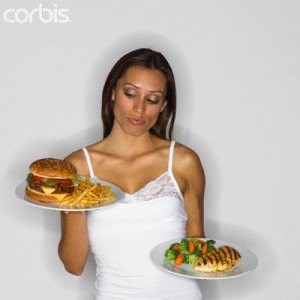 Changing eating habits: There is also an awakening cultural
trend about sustainable eating habits. An American living high on the food chain with a diet
heavy in grain-intensive livestock products, including red
meat, consumes twice as much grain as the average Italian
and nearly four times as much as the average Indian.
Adopting a Mediterranean diet can cut the grain footprint
of Americans roughly in half, reducing carbon
emissions accordingly.
Brown: Food bubble collapse
Changing eating habits: There is also an awakening cultural
trend about sustainable eating habits. An American living high on the food chain with a diet
heavy in grain-intensive livestock products, including red
meat, consumes twice as much grain as the average Italian
and nearly four times as much as the average Indian.
Adopting a Mediterranean diet can cut the grain footprint
of Americans roughly in half, reducing carbon
emissions accordingly.
Brown: Food bubble collapse
Hypocritical Politicians: Michael Pollan, professor of journalism at the University of California, Berkeley, has hit the nail on the head with his comments about lack of real political support for fixing the food system:
"The American way of eating has become the elephant in the room in the debate over health care. President Obama has made a few notable allusions to it, and, by planting her vegetable garden on the South Lawn, Michelle Obama has tried to focus our attention on it. President Obama talked about putting a farmers’ market in front of the White House, and building new distribution networks to connect local farmers to public schools so that student lunches might offer more fresh produce and fewer Tater Tots. He’s even floated the idea of taxing soda.
But so far, food system reform has not figured in the national conversation about health care reform. And so the government is poised to go on encouraging America’s fast-food diet with its farm policies even as it takes on added responsibilities for covering the medical costs of that diet. To put it more bluntly, the government is putting itself in the uncomfortable position of subsidizing both the costs of treating Type 2 diabetes and the consumption of high-fructose corn syrup.
Why the disconnect? Probably because reforming the food system is politically even more difficult than reforming the health care system. At least in the health care battle, the administration can count some powerful corporate interests on its side — like the large segment of the Fortune 500 that has concluded the current system is unsustainable. Pollan: local farmers vs. Big farm industry
Advantages of growing food locally:
| Table 1. What individuals can do to reduce food miles. Adapted from Brian Halweil's Home Grown: the Case for Local Food in a Global Market. 2002. |
|---|
|
Conclusion:
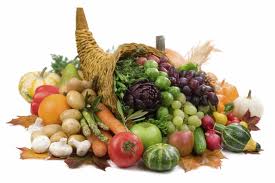 The current food system is unsustainable. It is dysfunctional. There is a
somewhat silent world food growing-distribution revolution taking place.
Although many places in the world are making their roof tops green, they are not
really growing a lot of food locally on the roof tops. More show than go!
Most roof tops were not built to support a heavy green roof. From the
review of information herein and from a common sense point of view , growing
food locally and minimizing transportation and storage expenses [ getting rid of
fossil fuels as dependent sources of energy ] is the best way to fix an
unsustainable food system.
The current food system is unsustainable. It is dysfunctional. There is a
somewhat silent world food growing-distribution revolution taking place.
Although many places in the world are making their roof tops green, they are not
really growing a lot of food locally on the roof tops. More show than go!
Most roof tops were not built to support a heavy green roof. From the
review of information herein and from a common sense point of view , growing
food locally and minimizing transportation and storage expenses [ getting rid of
fossil fuels as dependent sources of energy ] is the best way to fix an
unsustainable food system.
There can be no real health care reform without a reform of agricultural subsidies, of the food system and of the life styles of people. Politicians need to wake up to the reality that growing food locally is a lot better than importing it from distant regions! Grow your own food, cook in home and eat at home! Doing so helps you to control your own destiny! Sustainability is accepting the idea that surviving in a troubled and shrinking world is more important than making money!
Reference:
Alter Bonnie, "Victory Gardens: War on Waste," Tree Hugger, May.30.08. Article by Alter: Victory Gardens is no longer active.
Bachmann Janet, "Market Gardening: A Start Up Guide Market Gardening," National Sustainable Agriculture Information Service. Article by Bachmann: Market Gardening is no longer active.
Blythman Joanna, "Food miles: The true cost of putting imported food on your plate," The Independency Green Living, Thursday, May 31, 2007. Article by Blythman: Cost of food miles is no longer active.
Brown Lester R., "Adapted from Chapter 9, “Feeding Eight Billion People Well,” in Plan B 4.0: Mobilizing to Save Civilization," Earg Policy Institute, December 01, 2009. Brown: localizating agriculture Lester R. Brown is founder and president of Earth Policy Institute in Washington, D.C.
Brown Lester R., World on Edge: How to prevent an economic and Environmental Collapse, W. W. Norton & Company, New York, 2011 by Earth Policy Institute. Brown: Food bubble collapse
DeHaemer Christian A., "The Day They Burned the Price Chopper," Wealth Daily, January 17th, 2011. DeHaemer: food riots 2011
Hari Johann, "How Goldman gambled on starvation," The Independent, July 2, 2010. Hari: Stock Market impact on Food prices
Hill Holly, "Food Miles: Background and Marketing," National Sustainable Agriculture Information, Published 2008 ATTRA Publication #IP312. Article by Hill: Food miles is no longer active.
The term 'food miles' refers to the distance food travels from the location where it is grown to the location where it is consumed, or in other words, the distance food travels from farm to plate. Recent studies have shown that this distance has been steadily increasing over the last fifty years. Studies estimate that processed food in the United States travels over 1,300 miles, and fresh produce travels over 1,500 miles, before being consumed.
Holmgren David, "Permaculture," Permaculture Principles. Holmgren: Permaculture
Jaffe Sam, "No Green Acres? Try Skyscrapers," Wired, September 28, 2005. Jaffe: profitable roof gardens
Leahy Stephen, "In Corrupt Global Food System, Farmland Is the New Gold," IPS [Internet Press Service], UXBRIDGE, Canada, January 13, 2011. Credit:UN Photo/Albert Gonzalez Farran Article by Leahy: Farmland Is the New Gold is no longer active. "More than 100 billion dollars has been invested in buying farmland since 2008, mainly in Africa by foreign companies and state entities."
Linsley Benjamin and Ted Caplow, "Sustainable Urban Agriculture," Urban Land Green, Spring, 2008. Linsley: urban farms
Linn Amy, "Roof Positive: Maya Donelson Starts Organic Rooftop Garden," Sustain Lane, San Francisco, Ca., April 13, 2009. Article by Linn: San Francisco roof top gardens is no longer active.
Martinez Steve W., "Locally grown foods continue to grow in popularity," Western Farm Press, November 23, 2010. Martinez: local food popularity [ History of food production in USA and Canada ]
Mohn Tanya, "Hotels are ‘going local’ with rooftop gardens, beekeeping," New York Times, October 19. 2010. Article by Mohn: Hotel roof gardens is no longer active. Hotels are going local, establishing partnerships with area farmers and growing food in rooftop gardens. They are catering to travelers seeking to eat healthily on the road.
National Sustainable Agriculture Information Service, "Why Local Foods?" June 16, 2010. NSAIS: local foods
Pollan Michael, "Big Food vs. Big Insurance Twitter," The New York Times, September 9, 2009. Pollan: local farmers vs. Big farm industry
Radio Ecoshock, "LOCAL FOOD – GROWING SANE," December 3, 2010. Article by Ecoshock: growing insane is no longer actice.
Reinagel Monica, "HEALTH BENEFITS OF EATING ORGANIC FOODS," The Dekarske Company, April 13, 2009. Article by Reinagel: Health benefits organic food is no longer active.
Rocha Cecilia, "An Integrated Program for Urban Food Security: The Case of Belo Horizonte, Brazil," Ryerson Polytechnic University, Toronto, Ontario, April 2000. Article by Rocha: Brazil food program is no longer active.
Belo Horizonte’s Food localization:
The municipal government of Belo Horizonte, Brazil’s fourth-largest metropolitan area with over 3 million inhabitants, is ensuring the human right to food while promoting localization.“I knew we had so much hunger in the world,” states city administrator Adriana Aranha, one of the program’s masterminds. “But what is so upsetting, what I didn’t know when I started this, is it’s so easy. It’s so easy to end it.”
Fueled by the belief that food security is a public good on par with education and health, Belo Horizonte established a department to ensure access to food. Using roughly 1% of the municipal budget, this department collaborates with community groups, NGOs, and private retailers to fund and coordinate an astonishing array of cost-effective programs that reach every sector of the population.
Many ideas being implemented in Belo Horizonte are also advancing in the Bay Area, including local farm-to-institution marketing programs, urban gardens, farmers markets, and local low-cost food programs in underserved neighborhoods (like the People’s Grocery Mobile Market in Oakland).
Belo Horizonte has also pioneered innovative programs such as a city-run cafeteria serving thousands of healthy meals to the public each day (usually for under $1.00), and an urban orchard program that plants fruit trees in low-income neighborhoods for all to harvest.
A vital lesson from Belo Horizonte is that city governments can effectively use their power to fund, coordinate, and implement food security programs. ii In the Bay Area, many nonprofits and community groups still struggle for acceptance of some of these ideas, leaving many untapped opportunities for the public sector to demonstrate support for their oft-stated goal of food security for all.
Notes:
i Quoted in Frances Moore and Anna Lappe. Hope’s Edge (New York: Putnam Press, 2000).
ii Cecilia Rocha, An Integrated Program for Urban Food Security: The Case of Belo Horizonte, Brazil (Toronto, Ontario: Department of Economics, Ryerson Polytechnic University, 2000).
Sheppard Kate, "Beware of the Food Bubble," Mother Jones, January 14, 2011 Sheppard: food bubble bursting
Smith Alisa and J.B. MacKinnon, "100-mile Diet," Wikipedia. Smith: 100-mile diet
Sterman Nan, "Homegrown harvest," The San Diego Union-Tribune, August 3, 2008. Article by Sterman: homegrown San Diego is no longer active. San Diego Roots Sustainable Food Project: Three local kitchen gardens show that you can do it, too.
Tabb William, "The Global Food Crisis And what has capitalism to do with it?" ZMagazine, September 2008. Article by Tabb: global food crisis is no longer active.
UCLA Center for Sustainable Urban Systems, "Center for Sustainable Urban Systems." Article by UCLA: Sustainability is mo longer active.
University of Michigan, "Social Development Indicators," Center for Sustainable Systems. Article by Univ Michigan: Social Development is no longer active.
University of Michigan, "U.S. Food System," Center for Sustainable Systems. Article by Univ Michigan Food system Fact sheet is no longer active.
Velazquez Linda, "GPW: ESRI Canada’s Garden in the Sky," Sky Gardens, May 19, 2010. Velazquez: Canada roof gardens
